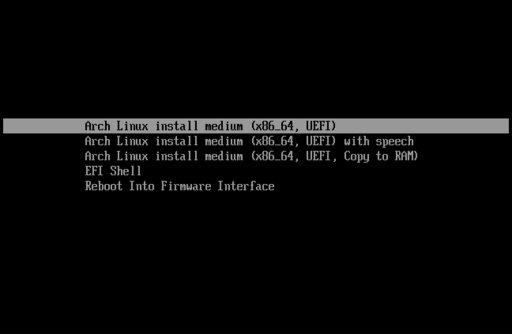Systemd-boot – Wikipedie
Systemd-boot je otevřený bootovací správce pro počítače podporující UEFI. Od května 2015 (tedy od verze 220 [1 ]) je součástí démona systemd, předtím byl samostatným projektem a jmenoval se gummiboot.
systemd-boot - Wikipedia
The boot loader automatically detected bootable images (including operating systems and other boot loaders), did not require a configuration file, provided a basic menu-based interface, and could also integrate with systemd to provide…
systemd-boot
Systemd-boot loads boot entry information from the EFI system partition (ESP), usually mounted at /efi/, /boot/, or /boot/efi/ during OS runtime, as well as from the Extended Boot Loader partition (Xbootldr) if it exists (usually mounted to…
Boot Process with Systemd in Linux - GeeksforGeeks
Your All-in-One Learning Portal: GeeksforGeeks is a comprehensive educational platform that empowers learners across domains-spanning computer science and programming, school education, upskilling, commerce, software tools, competitive…
GitHub - ivandavidov/systemd-boot: Simple UEFI Boot Manager
Simple UEFI Boot Manager. Contribute to ivandavidov/systemd-boot development by creating an account on GitHub.
systemd/systemd-boot – Gentoo Wiki
The Boot Loader Specification outlines a standard for bootloaders to follow. This specification is one of the methods used by systemd-boot to determine the location of the ESP and Xbootldr partitions.
Grub vs. Systemd-boot: Which One Should You Use as the…
When it comes to booting your Linux OS, there are the useful Grub and the newer and simpler systemd-boot. Which is better as a bootloader?
Is it possible to convert my GRUB 2 system to Systemd-boot?
Yes. For the most part, GRUB and Systemd-boot should be able to coexist inside the same system. This means that you can convert a machine that uses GRUB over to Systemd-boot.It is important to keep in mind that installing Systemd-boot will differ depending on your Linux distro. In most cases, however, this will involve loading your OS in UEFI mode and running su && bootctl install.
Can BIOS systems run Systemd-boot?
Yes. It is possible for BIOS-only systems to run Systemd-boot by emulating a UEFI-like environment. One of the most popular programs that can do this is Clover. This is a bootloader replacement for Hackintosh machines that you can rig to work with Linux distros.Is it possible to speed up GRUB 2?
Yes. One of the easiest ways to speed up GRUB 2 during boot is by reducing the time that it waits for its prompt. You can do this by running sudo nano /etc/default/grub, then changing the GRUB_TIMEOUT value to 1.On the other hand, you can also make sure that GRUB will always wait for a user response by changing that GRUB_TIMEOUT value to -1. Once done, you need to run sudo update-grub to apply your new configuration.
bootctl(1) — systemd — Debian bullseye — Debian Manpages
These commands are available for all boot loaders that implement the Boot Loader Specification[1] and/or the Boot Loader Interface[2], such as systemd-boot.
Debian -- Package Search Results -- systemd
(admin): system and service manager 247.3-7+deb11u7 [security]: amd64 arm64 armhf i386
Související dotazy
systemd-boot je otevřený bootovací správce pro počítače podporující UEFI. Od května 2015 (tedy od verze 220) je součástí démona systemd, předtím byl samostatným projektem a jmenoval se gummiboot. Po začlenění do systemd byl samostatný vývoj ukončen. Původně jej vyvinuli inženýři společnosti RedHat Kay Sievers a Harald Hoyer jako alternativu ke GRUBu. Cílem byl minimalistický správce bootování, který nepotřebuje konfiguraci a sám nalezne přítomné operační systémy, z kterých dá uživateli vybrat. Wikipedie
odkazuje na služby nejen od Seznam.cz.
© 1996–2025 Seznam.cz, a.s.








